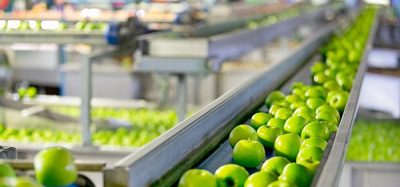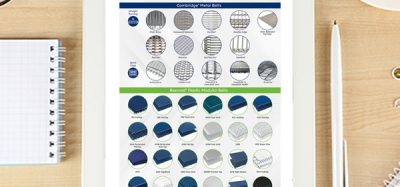In a nutshell: Tim Lawruk, Market Manager Food Safety, SDIX
- Like
- Digg
- Del
- Tumblr
- VKontakte
- Buffer
- Love This
- Odnoklassniki
- Meneame
- Blogger
- Amazon
- Yahoo Mail
- Gmail
- AOL
- Newsvine
- HackerNews
- Evernote
- MySpace
- Mail.ru
- Viadeo
- Line
- Comments
- Yummly
- SMS
- Viber
- Telegram
- Subscribe
- Skype
- Facebook Messenger
- Kakao
- LiveJournal
- Yammer
- Edgar
- Fintel
- Mix
- Instapaper
- Copy Link
Posted: 4 January 2012 | Tim Lawruk, Market Manager Food Safety, SDIX | No comments yet
SDIX is a biotechnology company, founded in 1990, whose portfolio includes food safety, supplying rapid pathogen test technologies. SDIX also designs, develops and commercially produces antibodies. In the life science market, SDIX’s technology and capabilities are being used to help discover disease mechanisms, facilitate development of new drugs, and provide antibodies and assays for the diagnosis of disease. “We’ve leveraged this core competency of antibody development into the design, development and validation of unique antibody-based test methods for food pathogens,” Lawruk explains. “It provides a platform to develop sensitive and specific anti – bodies that are proprietary to SDIX. Our rapid pathogen tests are a cost effective, simple to use lateral flow test strip design that allows us to provide the accuracy required by labs, similar to molecular-based and other more complex automated food pathogen detection platforms.” ]The major advantage to rapid pathogen test technologies is in the name – it’s fast. “The ability to determine the safety of a food product hours or even days faster provides a significant cost savings in terms of storage costs, shipping, product shelf life and overtime,” Lawruk says. “For example, a processor of food products that follows a test-and-hold policy would have to have storage capacity for two days production if they are using a 48 hour culture method compared to only one day’s capacity if using a rapid 24 hour method.”
SDIX is a biotechnology company, founded in 1990, whose portfolio includes food safety, supplying rapid pathogen test technologies. SDIX also designs, develops and commercially produces antibodies. In the life science market, SDIX’s technology and capabilities are being used to help discover disease mechanisms, facilitate development of new drugs, and provide antibodies and assays for the diagnosis of disease. “We’ve leveraged this core competency of antibody development into the design, development and validation of unique antibody-based test methods for food pathogens,” Lawruk explains. “It provides a platform to develop sensitive and specific anti - bodies that are proprietary to SDIX. Our rapid pathogen tests are a cost effective, simple to use lateral flow test strip design that allows us to provide the accuracy required by labs, similar to molecular-based and other more complex automated food pathogen detection platforms.” ]The major advantage to rapid pathogen test technologies is in the name – it’s fast. “The ability to determine the safety of a food product hours or even days faster provides a significant cost savings in terms of storage costs, shipping, product shelf life and overtime,” Lawruk says. “For example, a processor of food products that follows a test-and-hold policy would have to have storage capacity for two days production if they are using a 48 hour culture method compared to only one day’s capacity if using a rapid 24 hour method.”
SDIX is a biotechnology company, founded in 1990, whose portfolio includes food safety, supplying rapid pathogen test technologies. SDIX also designs, develops and commercially produces antibodies. In the life science market, SDIX’s technology and capabilities are being used to help discover disease mechanisms, facilitate development of new drugs, and provide antibodies and assays for the diagnosis of disease. “We’ve leveraged this core competency of antibody development into the design, development and validation of unique antibody-based test methods for food pathogens,” Lawruk explains. “It provides a platform to develop sensitive and specific anti – bodies that are proprietary to SDIX. Our rapid pathogen tests are a cost effective, simple to use lateral flow test strip design that allows us to provide the accuracy required by labs, similar to molecular-based and other more complex automated food pathogen detection platforms.” ]The major advantage to rapid pathogen test technologies is in the name – it’s fast. “The ability to determine the safety of a food product hours or even days faster provides a significant cost savings in terms of storage costs, shipping, product shelf life and overtime,” Lawruk says. “For example, a processor of food products that follows a test-and-hold policy would have to have storage capacity for two days production if they are using a 48 hour culture method compared to only one day’s capacity if using a rapid 24 hour method.”
Another saving is the labour and technician skill level required, according to Lawruk. “The workflow for rapid pathogen tests is usually very streamlined. A typical rapid test for Listeria would include the detection of the pathogen directly from the primary enrichment using a simple lateral flow test strip or another detection method, whereas conventional culture methods require streaking to selective agar plates and further incubation time. The agar plates are usually examined for typical colonies which, due to its subjectivity, require a trained microbiologist.” Lawruk believes that the disadvantage of the increase of costs of test materials for rapid testing is overcome by the savings in time-to-result, labour, storage and workflow savings.
Using a rapid method can save time, as well as money, but it also has to be accurate. Third party certification organisations and their independent validations are especially important when it comes to choosing a rapid test method. “It includes performance parameters such as the method’s sensitivity, specificity, ruggedness and statistical method comparison to the appropriate, approved regulatory method such as ISO, USDA or FDA cultural methods,” Lawruk clarifies. “Once a test method has been determined to be equivalent or better than the lab’s current method, the decision then becomes a financial one, based on materials, labour and product storage cost savings. Can the food processor or lab realise financial savings while maintaining or improving the same data quality objectives?” Listeria bacteria in particular are a problem for food processors. They can form biofilms on solid surfaces, which results in companies frequently carrying out environmental monitoring of surfaces for Listeria mono – cytogenes and other species. “Only Listeria monocytogenes is pathogenic, but under – standing the presence of all six Listeria species provides an early indication of whether conditions exist for Listeria monocytogenes growth niches,” Lawruk reveals. “Strains can spread within manufacturing plants. Detection by cultural and some rapid methods typically require a 48 hour enrichment due to its slow growth. The food industry is challenged to adopt faster detection methods for an organism that doesn’t like to grow.” SDIX has commercialised a new testing solution, the RapidChek Listeria F.A.S.T. Test System. The system detects all six strains of Listeria and, due to their proprietary enrichment media, the bacteria is given an optimal environment to thrive in. This rapid method provides results within 24 hours while maintaining highly accurate results.
“We think of our RapidChek® and RapidChek SELECT™ food pathogen detection products as a total ‘system’, incorporating both our antibody competency but also our enrichment media capability,” Lawruk states. “By optimising our enrichment media, an optimal environment is created for fast growth of the target pathogenic bacteria. If the organism can’t grow to the detectable level of the assay, it won’t detect it no matter how sensitive the test method.” As an example, in their RapidChek SELECT Salmonella products, they have developed a patented lytic bacteriophage supple ment for primary enrichment, a virus that infects bacteria by injecting genetic material which they carry into their target bacterial cells which are broken open and destroyed after replication in the bacteria cell. When the cell is destroyed, the phage progeny find new targets to infect. “In our system, these phage target specific crossreactive and common competitive bacteria and eliminate them from the sample enrichment,” says Lawruk. “It creates an optimal environment for Salmonella resuscitation and growth, creating shorter enrichment times and more accurate Salmonella detection methods.”








